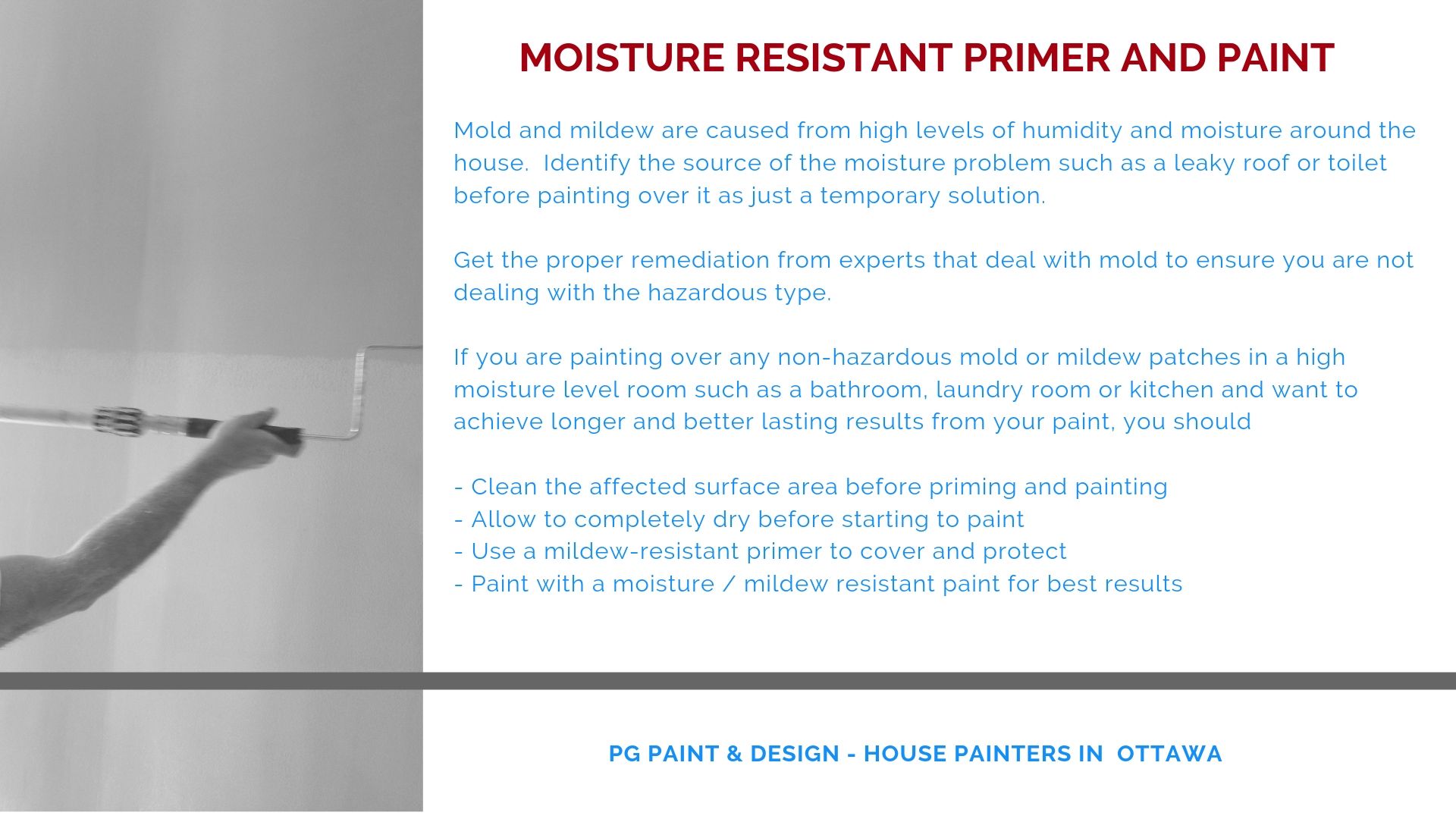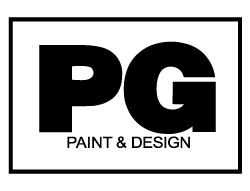Paint is sensitive to humidity and extreme temperatures and before painting over mold or mildew the necessary precautions need to be taken. If left ignored it is not only unsightly but can be hazardous to your health.
Mold is never a pretty issue to have in any home, but it does happen. The causes are commonly due to the lack of sufficient air circulation in areas such as the bathroom, basement, or kitchen where the constant levels of high humidity and moisture cause the potential buildup and opportunity for mold to grow.
Here are a few tips to help guide you in identifying if you have a mold or mildew issue, how to fix and repair it and what type of paint should be used to prevent mold build up from recurring.
How To Identify If There Is a Mold or Mildew Problem In The Home
To prevent an issue with mold or mildew the source of the moisture problem needs to be identified first.
Find out if the moisture on the walls or ceilings is due to a water leak from a bathtub, faucet or toilet, or a leak from the roof that has now penetrated through leaving you with water stains on the ceiling.
Once the root of the problem is identified it needs to be repaired before moving on to the next step of fixing it and preventing the mold or mildew build up from returning.
Here is what you need to look for to be able to identify if there is a mold or mildew problem in your house.
Poor Air Circulation – Lack of good air circulation in any room inhibits the moisture from escaping. In rooms such bathrooms, basements, laundry rooms and kitchens it is recommended to either open windows for fresh air , or the installation of a ceiling fan or bathroom fan that vents the hot humid air from the bathroom to the outside. Good air circulation helps prevent the moisture from building up, it prevents you from seeing the buildup of water stains on the walls or ceilings and avoids the possibility of mold growth.
Bad Smells – Mold has a very distinctive scent that is musty or damp. How does musty or damp actually smell? Well try to think of dirty hockey gear or gym clothes in a sealed gym bag for a few days, Yup!!! that’s it. It’s that type of smell that if you walk into your home and can smell something like that, it’s a sure sign that it is time to start looking for where the water leak is coming from to be causing the mold or mildew to grow.
Seeing Spots – Mold and mildew can almost look alike. Spotting the difference between the black, green, yellow sometimes white spots of mold may be difficult and best left to the professionals to be on the safer side of caution. These spots can be found anywhere from behind or around toilets, bathtubs, faucets, tiles, baseboards, ceiling corners and windows and frames. If you also notice that there is condensation on the inside of the windows that is a sign that there is not enough air circulation in your home and it may be the cause of the mold issue.
What Type Of Paint To Use For Mold or Mildew
Once the source of why there is mold or mildew in your home is solved and all precautions and measures to ensure that it is not hazardous have been taken then painting can begin.
Only if the mold growth is confirmed as the non-hazardous type can you proceed to remove it and then consider painting over it using the right products.
If you are working with expert painters they have the knowledge to recommend the best paint products, the right type of paint primers that are mold and mildew resistant, along with recommending the right type of paint finishes to avoid the recurrence of the mildew buildup.
Failure to use the specially formulated primers or sealants along with the different finishes are what makes the difference between hiring an expert or second guessing it for yourself.
How To Fix and Prevent Mold and Mildew
Fixing the problem of removing mold or mildew can be as simple as washing it away if it is the non hazardous kind. Here are a few more tips on how to prevent it from returning.
To wash it off you can:
- Scrub the surface area with one part bleach and three parts water. Apply to affected mold or mildew area. After approximately 10 minutes you can rinse the area with clean water.
- Let the area completely dry, then repeat step 4 until all the mildew and mold spots have disappeared.
To paint over it you should:
- Use a quality primer to ensure a good seal to the drywall. It will also help create the bond for the paint to adhere to. Using a product like Kilz guarantees you will get both the seal and the bond.
- Paint with a high quality mildew resistant paint such as Aura Bath and Spa paint from the Benjamin Moore Paints collection as it is optimal for humid environments like the kitchen and bathroom.
Bonus Tip: Leave a window slightly open in high humidity and moisture areas of your home so that air can circulate. Consider installing a ceiling fan in the kitchen or bathroom exhaust fan that will pull the humidity and moisture to the outdoors.
Call In Professionals
If you are uncertain as to whether the mold is of the hazardous or non hazardous type, don’t just leave it to a guess call in the experts that deal with mold everyday. Sleep better at night knowing that you are not living in a home that is harming your health.
If you feel uncertain to what type of paint you should use or if you can paint over mold or mildew, we recommend you contact a painting company in Ottawa you can trust.
Taking all the right steps is key to getting peace of mind, knowing what type of mold you are dealing with is critical to your good health.
For professional house painting tips and advice contact painters in Ottawa that specialize in your house and home with the experience and knowledge in the painting business and drywall repairs services.
Connect With Us For An Estimate
This post was originally Published on Jul 20, 2015 and edited April 05, 2020
